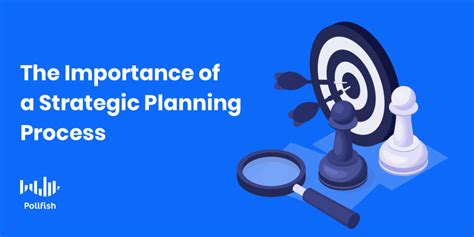In the journey of personal and professional development, setting effective goals is a fundamental step towards achieving success. One powerful framework for goal setting is the SMART criteria, which stands for Specific, Measurable, Achievable, Relevant, and Time-bound. This comprehensive guide delves into the importance of SMART goals and how they can transform vague aspirations into clear, actionable plans. By defining and implementing SMART goals, individuals can enhance their focus, motivation, and productivity, ensuring their efforts are aligned with their broader objectives. Join us as we explore the characteristics and benefits of SMART goals, and learn how to apply this method to unlock your full potential.
Let’s examine this topic closely with weninsure.xyz
1. Introduction to SMART Goals: Definition and importance in personal development.
SMART goals are essential for effective personal and professional development. This acronym stands for Specific, Measurable, Achievable, Relevant, and Time-bound. Each element plays a crucial role in turning vague aspirations into concrete, actionable plans.
Specific goals eliminate ambiguity, providing a clear path forward. Measurable goals enable progress tracking, allowing you to witness tangible results. Achievable goals are realistic, considering your current abilities and resources. Relevant goals align with your broader objectives, ensuring that your efforts are purposeful. Finally, Time-bound goals introduce deadlines, fostering a sense of urgency and accountability.
The importance of SMART goals in personal development cannot be overstated. They provide a structured approach to goal setting, which enhances focus and motivation. By breaking down large aspirations into manageable steps, SMART goals make it easier to stay committed and make consistent progress. Moreover, they help in prioritizing tasks and managing time effectively, leading to a more organized and productive path towards achieving your aspirations. Embracing SMART goals is a strategic move towards unlocking your full potential.

2. Specific: Characteristics of clear, well-defined goals and examples of specificity.
Specific goals are the foundation of effective goal setting. They eliminate vagueness and provide a clear direction for your efforts. A specific goal clearly defines what you want to achieve, why it is important, and how you plan to accomplish it. This clarity helps in focusing your efforts and resources, making it easier to stay on track.
Characteristics of specific goals include clarity, detail, and precision. Instead of setting a broad goal like “improve fitness,” a specific goal would be “run three times a week for 30 minutes each session to improve cardiovascular health.” This goal specifies the activity, frequency, and purpose, leaving no room for ambiguity.
Specific goals can be found across all areas of life. For instance, in the professional realm, a specific goal might be “complete a project management certification course by the end of the year to qualify for a promotion,” rather than the general aim of “advancing my career.” Similarly, in personal development, a specific goal could be “read one self-improvement book per month to enhance personal growth,” as opposed to the vague goal of “reading more.”
By setting specific goals, you create a roadmap that guides your actions and decisions. This specificity not only boosts motivation but also allows for better planning and resource allocation. Ultimately, specific goals set the stage for measurable progress and tangible achievements, forming the cornerstone of the SMART goal framework.

3. Measurable: How to quantify goals and track progress effectively.
Measurable goals are crucial for tracking progress and maintaining motivation. Quantifying your goals provides clear criteria to determine whether you are on track or have achieved your desired outcome. Measurable goals answer the questions of how much, how many, and how you will know when the goal is accomplished.
To create measurable goals, include specific metrics or indicators of success. For instance, instead of setting a goal to “save money,” a measurable goal would be “save $500 each month for a year.” This goal has a clear target amount and timeframe, making it easier to monitor progress.
Tracking progress effectively involves regularly assessing your performance against these metrics. Utilize tools such as spreadsheets, apps, or journals to log your progress. For example, if your goal is to “exercise for 30 minutes five times a week,” you can use a fitness app to record your workouts and monitor consistency.
Regular check-ins are essential to stay on course. Set aside time weekly or monthly to review your progress and make any necessary adjustments. This process helps you stay accountable and motivated, as you can see tangible evidence of your efforts.
Measurable goals not only provide a clear endpoint but also offer a sense of accomplishment as you track your achievements. They are a key component of the SMART goal framework, ensuring that your efforts are directed toward concrete, attainable outcomes.

4. Achievable: Evaluating goal feasibility and setting realistic expectations.
Achievable goals are essential to ensure that your objectives are realistic and attainable. Evaluating the feasibility of your goals involves assessing your current resources, skills, and constraints to determine whether the goal is within your reach. Setting realistic expectations helps maintain motivation and prevents frustration from pursuing unattainable targets.
To set achievable goals, start by breaking down larger objectives into smaller, manageable steps. This approach allows you to focus on incremental progress and build momentum over time. For example, instead of aiming to “run a marathon,” a more achievable goal might be “run three miles without stopping within three months.” As you reach this milestone, you can gradually increase your distance.
When assessing the feasibility of your goals, take stock of your current circumstances and available resources. Reflect on whether you possess the required time, skills, and support to successfully reach your objective. If any of these elements are lacking, determine what adjustments need to be made or what additional resources you might need to acquire.
Setting realistic expectations also involves being honest about potential obstacles and planning how to overcome them. This proactive approach ensures that you are prepared to handle challenges and stay on track.
Achievable goals strike a balance between challenging and realistic, providing a clear path to success. They are a vital component of the SMART goal framework, ensuring that your aspirations are grounded in reality and within your capability.

5. Relevant and Time-bound: Aligning goals with broader objectives and setting deadlines for accountability.
Relevant goals ensure that your objectives align with your broader personal or professional aspirations. Setting relevant goals involves evaluating how each goal fits into your long-term plans and contributes to your overall development. For instance, if your broader objective is to advance your career, a relevant goal might be “complete a professional certification course within six months.” This goal directly supports your career advancement and is in line with your larger ambitions.
Time-bound goals introduce deadlines, which create a sense of urgency and accountability. By setting specific timeframes, you can better manage your efforts and stay focused on your objectives. For example, instead of setting a goal to “improve public speaking skills,” a time-bound goal would be “attend and complete a public speaking workshop by the end of the quarter.”
Deadlines help prevent procrastination and provide motivation to maintain consistent progress. Regularly review and adjust your timelines to ensure they remain realistic and achievable.
Combining relevance and time-bound elements ensures that your goals are both purposeful and timely, fostering a disciplined and strategic approach to personal and professional development. These components complete the SMART goal framework, making your aspirations actionable and attainable.

Incorporating the SMART framework into your goal-setting process transforms vague aspirations into clear, actionable plans. By ensuring goals are Specific, Measurable, Achievable, Relevant, and Time-bound, you enhance your focus, motivation, and productivity. This structured approach helps you stay organized, track progress, and achieve meaningful outcomes. Embrace SMART goals to unlock your full potential and make consistent strides toward personal and professional success. Start setting SMART goals today and watch your aspirations turn into achievements.
weninsure.xyz

